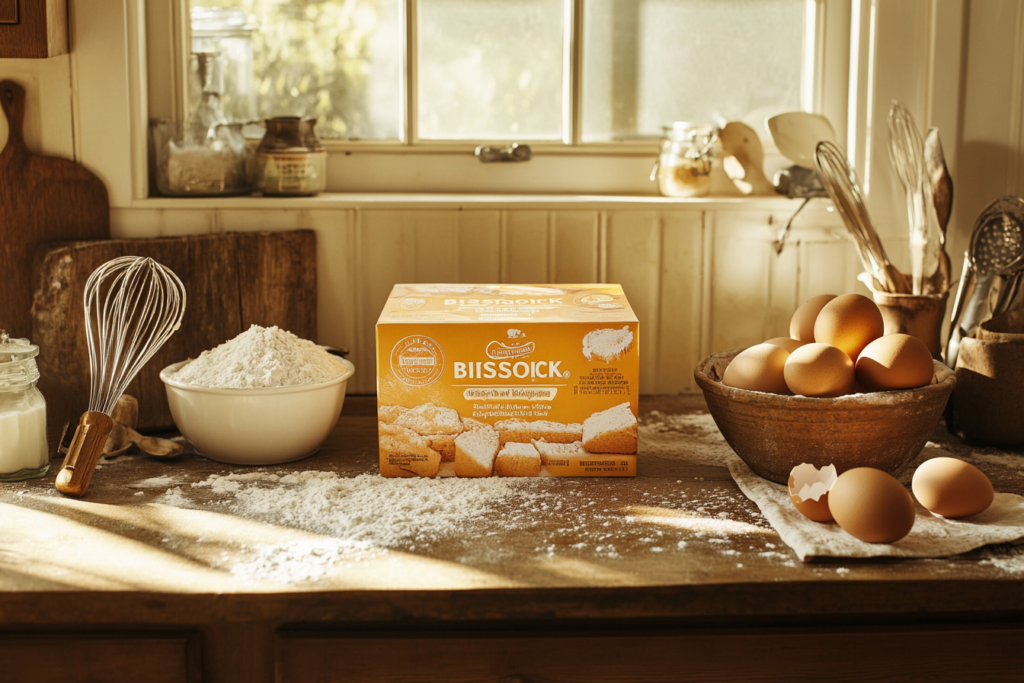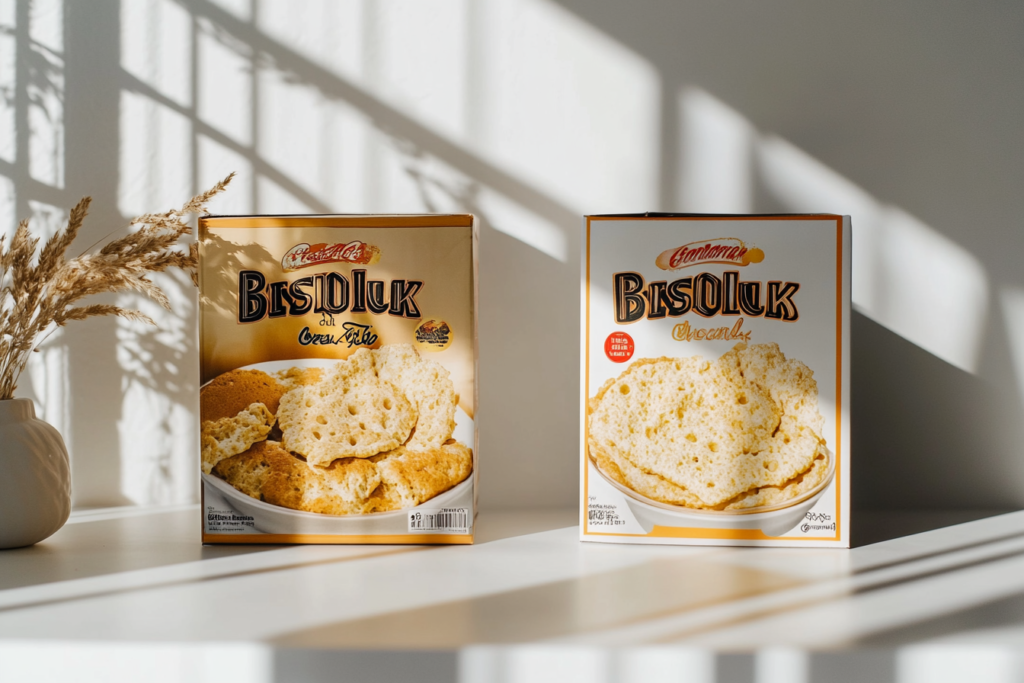Introduction
Bisquick, the beloved pantry staple for pancakes, biscuits, and more, has recently undergone changes, leaving many to wonder, why did they change Bisquick? These updates have sparked curiosity and debate among loyal fans. The updated formula has introduced noticeable differences in taste, texture, and performance. In this article, we explore why these changes were made, what’s new, and how it impacts your favorite recipes.
What is Bisquick?
Bisquick is a versatile, pre-mixed baking product made by General Mills under its Betty Crocker brand. The product combines flour, shortening, salt, and a leavening agent, making it a convenient solution for creating baked goods quickly and easily. Since its launch in 1931, Bisquick has been a go-to option for pancakes, waffles, biscuits, and other baked favorites.
What sets Bisquick apart is its simplicity. By adding just a few ingredients like milk or eggs, users can prepare a variety of recipes without needing to measure out multiple components. Its convenience has made it a staple in households across America and beyond, becoming synonymous with quick and delicious home cooking.
The History of Bisquick
The story of Bisquick begins in the 1930s with an innovative chef at a railroad dining car who created a premixed biscuit dough to save time. Inspired by this idea, Carl Smith, a General Mills executive, worked with his team to develop the first ready-to-use baking mix. Bisquick hit the shelves in 1931 and quickly became a hit for its time-saving convenience during the Great Depression.
Over the years, Bisquick has undergone a few changes, from recipe updates to packaging redesigns, to keep up with evolving consumer preferences. Despite these tweaks, it has maintained its status as a beloved pantry item, helping families create everything from classic pancakes to creative casseroles.
Why Did They Change Bisquick? The Main Reasons
Changing consumer preferences, health trends, and ingredient updates prompted General Mills to revise Bisquick. These changes reflect a shift toward natural, healthier options while improving sustainability and versatility. Here are some of the main reasons why the brand decided to revise its formula:
- Health and Nutrition Trends:
As more consumers seek healthier options, food companies are reducing trans fats, artificial flavors, and preservatives in their products. General Mills likely adjusted the Bisquick formula to align with these demands. - Ingredient Sourcing and Cost Efficiency:
Over time, ingredient availability and cost have influenced many recipe changes in processed foods. Updating the formula could reflect efforts to manage production costs while maintaining product quality. - Improving Versatility:
The new Bisquick formula might be optimized to work better in a wider variety of recipes, such as gluten-free or vegan alternatives, making it more appealing to a broader audience. - Sustainability Goals:
Many companies are revising their production processes to be more sustainable. Changes in Bisquick’s ingredients or packaging might reflect these goals, ensuring the product is environmentally friendly.
Why Did They Change Bisquick? What’s Different About New one?
The recent changes to Bisquick have led to noticeable differences in its taste, texture, and performance in recipes. Here’s a breakdown of what’s new and how it might affect your favorite dishes:
- Updated Ingredients List
The most significant change is in the ingredients. For instance, some formulations now exclude partially hydrogenated oils, a common source of trans fats. This change aligns with FDA guidelines and consumer preferences for healthier options. Additionally, there might be adjustments in the ratio of leavening agents, flour types, or other components to create a lighter, fluffier texture in the final product.

- Taste Adjustments
Some long-time Bisquick users have noted a subtle difference in flavor. While these changes may seem minor, they can affect recipes like biscuits or pancakes where Bisquick’s distinct taste was a key feature. This might result from the removal of certain additives or a shift to more natural flavorings. - Texture and Consistency
The revised formula may alter the consistency of the mix, especially after adding liquids. Users might find that the batter is either thicker or thinner than before, impacting how it spreads on a griddle or rises in the oven. - Packaging and Instructions
Along with the recipe update, Bisquick has also refreshed its packaging. The new design emphasizes its versatility, showcasing various recipes on the box. Instructions may also have been simplified or altered to match the revised product.

Tips for Adapting to the New Bisquick:
- Experiment with Liquids: If the batter seems too thick or thin, adjust the liquid quantities slightly for the desired consistency.
- Flavor Enhancements: Add a pinch of sugar, vanilla extract, or spices like cinnamon to recreate the classic Bisquick flavor if you miss it.
- Monitor Cooking Times: The new formula might require slight adjustments in cooking times, so keep an eye on your baked goods to avoid overcooking.
Consumer Reactions to the Change
Whenever a beloved product undergoes a change, it’s bound to spark reactions, and Bisquick is no exception. The feedback from consumers has been mixed, with opinions ranging from enthusiastic approval to disappointment.
- Positive Reactions:
Many consumers appreciate the healthier approach of the new formula, particularly the absence of trans fats and artificial preservatives. Families concerned about nutrition have welcomed these updates as a step in the right direction. - Negative Feedback:
On the flip side, loyal Bisquick users have expressed frustration over changes in taste and texture. Social media platforms and product reviews are filled with comments from customers who prefer the classic formula and are struggling to replicate their favorite recipes with the new mix. - Neutral Opinions:
Some users haven’t noticed much of a difference and continue to enjoy Bisquick as their go-to baking mix. These consumers find that the product still delivers convenience and versatility, despite the updates. - Creative Workarounds:
To address these changes, creative cooks have started sharing tips and tricks online for adapting the new Bisquick to suit their preferences. From adding butter to adjusting liquid ratios, these hacks aim to bring back the familiar taste and performance of the original mix.
Online Reviews Snapshot:
- “The new Bisquick is healthier, but I miss the rich flavor of the old one.”
- “It still works great for pancakes, but my biscuits don’t rise as much anymore.”
- “Love the new packaging! It’s easier to find recipes on the box.”
The recent updates to Bisquick have left many wondering, “Why did they change Bisquick?” These changes, which include a new formula and packaging, align with evolving consumer preferences for healthier and more sustainable food options. For insights into how these updates might impact your favorite recipes, explore the detailed comparison in Bisquick Water vs. Milk: Which is Better?. If you’re looking to adapt to the new mix with creative recipes, consider trying the classic Bisquick Shortcake Recipe, a timeless favorite that works beautifully with the revised formula. For a broader understanding of how Bisquick compares to other baking staples, the analysis of Shortcake vs. Biscuit: Differences Explained offers valuable context.
FAQs About Bisquick Changes
What’s the Difference Between Old Bisquick and New Bisquick?
The primary difference lies in the updated formula of Bisquick. The new version removes partially hydrogenated oils, which were a source of trans fats. This change aligns with modern health trends and FDA guidelines. Additionally, adjustments in flavorings, preservatives, and the leavening agents (such as baking powder) have slightly altered the taste and texture of the product. Some users report that the new Bisquick yields lighter and fluffier results, while others feel it lacks the richness of the old formula.
What Did They Change in Bisquick?
- Healthier Ingredients:
- The removal of trans fats by eliminating partially hydrogenated oils.
- A move toward more natural and clean-label ingredients.
- Nutritional Adjustments:
- Potential changes in sodium or calorie content to make the product healthier.
- Flavor and Texture:
- Slight changes in taste due to the removal or substitution of certain additives.
- Packaging:
- Updated packaging design that emphasizes health benefits and versatility.
Does Bisquick Still Exist?
Yes, Bisquick is still widely available and remains a popular product under the Betty Crocker brand, owned by General Mills. While the formula has been updated, it continues to be a convenient option for making pancakes, waffles, biscuits, and other baked goods. General Mills has even expanded the Bisquick line to include variations such as Gluten-Free Bisquick to cater to specific dietary needs.
What Makes Bisquick Different From Flour?
Bisquick is a pre-mixed baking mix that combines multiple ingredients, making it more convenient than plain flour for certain recipes. Here’s what sets it apart:
- Added Ingredients:
- Bisquick contains flour, baking powder (a leavening agent), salt, and shortening. This combination eliminates the need to measure and mix these components individually.
- Time-Saving:
- With Bisquick, you can skip multiple steps in recipes, as it’s designed to be a one-step solution for pancakes, biscuits, and more.
- Versatility:
- Unlike plain flour, Bisquick is tailored for specific recipes, offering consistent results for baking and frying.
- Not Suitable for All Recipes:
- Bisquick cannot replace plain flour in recipes that require custom ratios of baking powder, salt, or fat.
Conclusion
The changes to Bisquick reflect the brand’s effort to stay relevant in a competitive and health-conscious market. While the new formula has sparked mixed reactions, it continues to deliver the convenience and versatility that have made it a household staple for decades.
If you’re a loyal Bisquick fan, adapting to the new version may require minor tweaks in your recipes. For those new to Bisquick, the updated product offers a healthier option for creating quick and delicious meals.
Ultimately, whether you’re making fluffy pancakes, buttery biscuits, or a savory casserole, Bisquick remains a reliable ally in the kitchen—proving that even with changes, some classics never go out of style.

